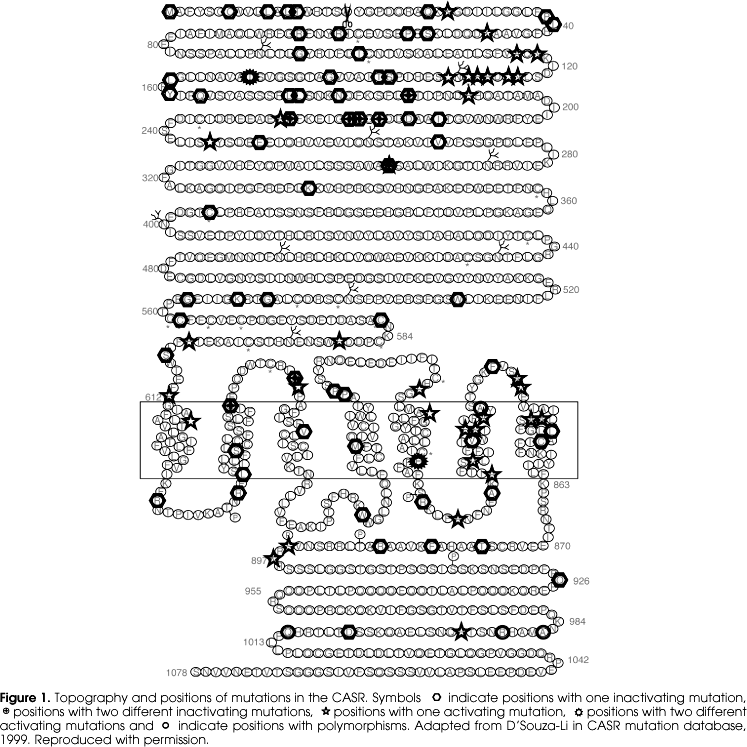The calcium-sensing receptor (CASR) adjusts the extracellular calcium set point regulating PTH secretion and renal calcium excretion. The receptor is expressed in several tissues and is also involved in other cellular functions such as proliferation, differentiation and other hormonal secretion. High extracellular calcium levels activate the receptor resulting in modulation of several signaling pathways depending on the target tissues. Mutations in the CASR gene can result in gain or loss of receptor function. Gain of function mutations are associated to Autossomal dominant hypocalcemia and Bartter syndrome type V, while loss of function mutations are associated to Familial hypocalciuric hypercalcemia and Neonatal severe hyperparathyroidism. More than one hundred mutations were described in this gene. In addition to calcium, the receptor also interacts with several ions and polyamines. The CASR is a potential therapeutic target to treatment of diseases including hyperparathyroidism and osteoporosis, since its interaction with pharmacological compounds results in modulation of PTH secretion.
Familial hypocalciuric hypercalcemia; Autosomal dominant hypocalcemia; Mutations; CASR; Bartter syndrome type V; Neonatal severe hyperparathyroidism

